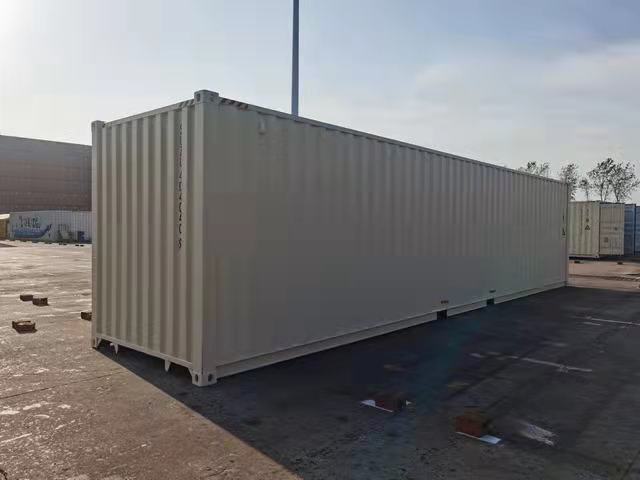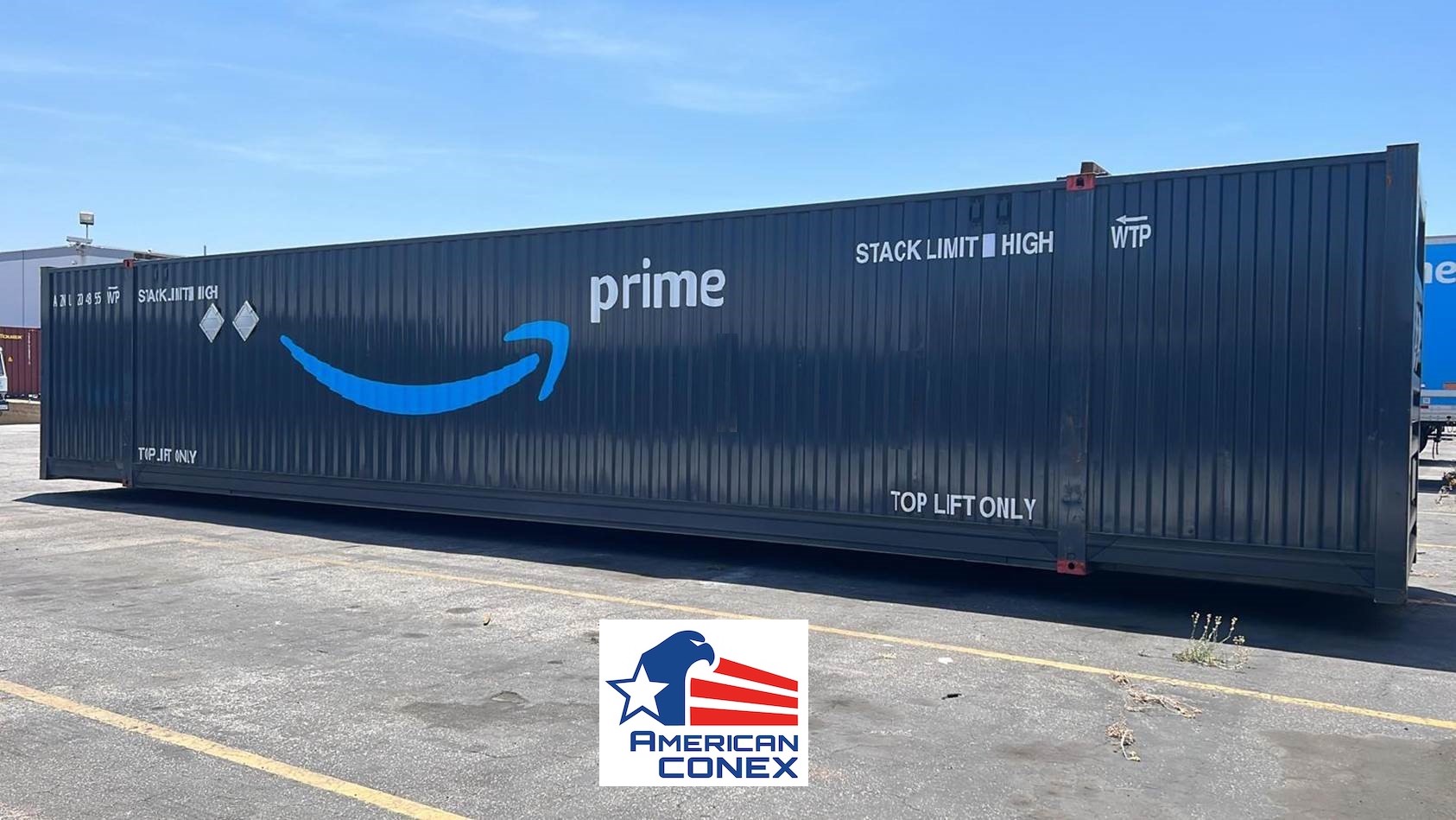How to Buy New Shipping Container 40 x 8 x 9.6 Without Blowing Your Budget
How to Buy New Shipping Container 40 x 8 x 9.6 Without Blowing Your Budget
Blog Article
The Ultimate Overview to Choosing the Right Shipping Container for Your Needs
When it comes to choosing the appropriate shipping container, comprehending your certain needs is crucial. You'll wish to take into account variables like size, type, and material to guarantee you make the best selection. From typical dimensions to specialized options, there's a whole lot to check out. Plus, budgeting for both the container and any modifications can make a big distinction. Let's break down the crucial elements to assist you discover the ideal suitable for your demands.
Comprehending Delivery Container Sizes
When you're picking a delivery container, understanding the various dimensions offered is essential for making the right decision. Delivering containers usually come in basic sizes of 20 and 40 feet, however you'll additionally find various other measurements. Knowing the size you require relies on what you intend to store or transport.If you're moving smaller items, a 20-foot container could be excellent, while bigger deliveries commonly need a 40-foot container. The elevation can likewise vary; high cube containers provide additional vertical space, which can be advantageous for taller goods.Before making a decision, gauge your cargo, and consider exactly how much room you'll require for loading and discharging. Always factor in potential future needs-- choosing a somewhat bigger container might save you hassle down the line. Ultimately, picking the right dimension will certainly improve effectiveness and guarantee your things are safe during transportation
Types of Delivery Containers Available
There are several sorts of shipping containers readily available, each made for specific objectives and cargo requirements. The standard completely dry container is flexible, best for basic freight. If you're delivering perishable goods, consider a refrigerated container, which preserves a controlled temperature level. For extra-large things, high dice containers supply additional height, fitting taller loads.If you need to carry heavy equipment or devices, level rack containers offer a sturdy base without walls. Open-top containers permit for very easy loading of tall freight, with a detachable tarp covering for security. If you're trying to find adaptability, take into consideration a collapsible container that can be easily kept when not in use.Lastly, specialized containers like container containers are utilized for fluids, while vented containers are created for bulk cargo that requires air flow. Recognizing your cargo kind will certainly aid you choose the appropriate container to meet your delivery requires effectively.
Material Factors To Consider for Sturdiness
When picking a delivery container, the product plays a vital role in its durability. You'll want to weigh the benefits of steel versus aluminum, particularly relating to corrosion resistance. Recognizing these factors can assist you make a much more informed choice for your delivery needs.
Steel vs. Light weight aluminum Containers
Exactly how do you pick between steel and aluminum containers for your delivery requires? Begin by thinking about resilience. Steel containers are durable and deal exceptional strength, making them ideal for heavy tons and rough problems. They withstand damage from impacts and are commonly less costly, which can be a major factor for budget-conscious buyers.On the other hand, light weight aluminum containers are lightweight, which can conserve you on delivery costs. They're simpler to maneuver and are a wonderful choice if you require to deliver items regularly. Light weight aluminum is usually extra expensive and less robust than steel. Evaluate your certain demands very carefully, consisting of weight, expense, and the kind of cargo you'll be delivery, to make the ideal option for your situation.
Rust Resistance Aspects
Choosing the appropriate material does not simply involve weight and expense; corrosion resistance plays a considerable role in resilience. When picking a delivery container, consider the setting it'll encounter. Steel containers, while strong, can corrosion if not correctly dealt with. Seek alternatives with safety finishes or galvanization to boost their life-span. Aluminum, on the other hand, provides natural rust resistance, making it optimal for coastal areas or moist problems. It can be a lot more pricey. Additionally, analyze the container's use-- if it'll be exposed to chemicals or harsh weather condition, focus on materials that can hold up against these problems. Spending in a corrosion-resistant his response container now can save you from pricey fixings or replacements down the line. Pick wisely for long-term advantages.
Alterations and Customization Options
Delivering containers aren't simply for carrying goods; they can be transformed to meet your certain needs with different modifications and personalization alternatives. You can convert a common container into a relaxing workplace, a temporary retail store, or also an individual gym. The possibilities are virtually endless.Think concerning adding home windows, insulation, or air flow to boost convenience. You might additionally take into consideration electric wiring, pipes, or even custom shelving to enhance functionality. If safety's a problem, enhanced locks can provide peace of mind.For aesthetic appeal, you can paint the container or add an one-of-a-kind design to make it attract attention. Do not neglect concerning flooring options-- whether you want resilient plywood or something extra innovative, it can elevate the space.Ultimately, customizing your delivery container to match your requirements can boost use and produce an unique environment that shows your design.
Assessing Your Transport Needs
When it comes to utilizing your modified delivery container, recognizing your transportation requires is crucial. Start by identifying what you'll be delivery-- whether it's heavy tools, retail items, or personal things. Each kind of cargo has different needs pertaining to size, weight, and accessibility.Next, take into consideration the range and setting of transportation. Are you delivering in your area, country wide, or globally? This influences the container's design and functionality. If you're using vehicles, guarantee your container fits common measurements for simple loading and unloading.Additionally, think of transit problems. Will your things require special defense from weather or temperature level variations? If so, you could need insulation or ventilation functions in your container.Lastly, analyze exactly how typically you'll be moving products. Constant deliveries may require a much more resilient and versatile container to satisfy recurring demands. By resolving these aspects, you'll be well-prepared to pick the right delivery container for your demands.
Budgeting for Your Shipping Container
Setting an allocate your shipping container is essential for ensuring a smooth investing in process. Initially, figure out how much you can pay for to invest. Costs can vary substantially based on dimension, problem, and kind. New containers generally set you back a lot more, yet utilized ones can use considerable savings.Next, consider any kind of added prices you may sustain, such as transportation charges, delivery costs, and modifications. If you prepare to personalize the container, consider those costs also. Study various suppliers to compare prices and discover the very best offer that meets your needs.Don' t neglect to consist of any kind of licenses or regulations that might relate to your acquisition and use the container. By clearly describing your budget plan, you'll be much better prepared to make enlightened decisions, guaranteeing you obtain the ideal container without damaging the bank.
Maintenance and Take Care Of Long life
To ensure your delivery container lasts for several years, routine maintenance is vital. Beginning by inspecting the outside for corrosion, damages, and damage. If you spot More Info any issues, address them right away to Recommended Reading avoid more wear and tear. Tidy the container regularly, both in and out, to remove dirt, particles, and moisture that can result in corrosion.Ensure the doors seal effectively and lube the joints to prevent corrosion and sticking. If you're utilizing the container for storage space, consider including ventilation to reduce moisture and mold development. For additional security, use a rust-inhibiting paint or sealant annually.If your container's located in a harsh environment, like seaside areas, you might need to boost maintenance regularity. Maintain an eye on the floor covering, also; any indications of wear ought to be fixed right away. With these straightforward steps, you'll expand the life of your shipping container significantly.
Often Asked Concerns
How Do I Find a Reliable Shipping Container Supplier?
To discover a trusted shipping container provider, start by looking into online testimonials, asking for suggestions from pals or industry get in touches with, and comparing costs. Constantly check their credentials and guarantee they use quality containers that satisfy your needs.

Can I Lease a Shipping Container Rather of Buying?
Yes, you can absolutely lease a delivery container instead of getting one. Lots of suppliers offer rental choices, which can save you money and supply versatility if you just require it for a brief duration.
What Permits Are Required for Container Placement?

Are Delivery Containers Weatherproof and Ideal for Outdoor Storage Space?
Yes, shipping containers are typically weatherproof, developed to withstand rough problems. Their robust construction keeps your products protected and completely dry, making them suitable for exterior storage space. Simply ensure correct air flow to avoid dampness buildup inside.
How Do I Move a Delivery Container Once Purchased?

Report this page